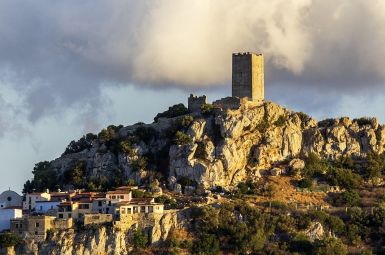Avete fatto la foto davanti al duomo di Milano? Bene, ora chiudete gli occhi, dimenticate la Madonnina e le guglie gotiche e respirate profondamente. Lasciatevi solleticare il naso dall’aria frizzante delle Alpi e quando riaprirete il vostro sguardo scoprirete di trovarvi a Carnello del Tasso, un borgo minuto lontano dallo smog milanese. Carnello del Tasso è un piccolo paese costruito sulla roccia che guarda a strapiombo sulle acque del fiume Brembo, per raggiungere questo luogo unico bisogna abbandonare la macchina ed incamminarsi lungo le mulattiere. La ricompensa è un paesaggio d’incanto e un buon piatto di Casonei, tipici ravioli locali.
La Lombardia da scoprire non è certo quella delle industrie che circondano la Pianura Padana ma è un collage di luoghi che vivono all’ombra delle grandi città, grazie alle quali hanno potuto mantenere le piccole caratteristiche che le rendono di una bellezza superiore.
Non ci credete? Per scoprirle bisogna partire eccezionalmente da una grande città: Mantova, la patria del poeta latino Virgilio. Il lungo governo della signoria Gonzaga ha reso Mantova la città più bella della regione, una gemma preziosa nella storia del rinascimento italiano. Circondata da tre specchi d’acqua, grazie ai suoi palazzi e alle sue piazze il centro storico della città è stato riconosciuto come patrimonio mondiale dell’Unesco.
Nonostante il pensiero comune, la Lombardia è una terra di natura. Sullo scenario delle maestose montagne alpine si trovano i suoi laghi: il lago di Garda e il castello Scaligero, circondato dalle acque; il lago d’Iseo e il lago di Como, celebre per l’incipit dei Promessi Sposi ma anche re incontrastato dei paesaggi da favola, incorniciato da boschi lussureggianti e ville importanti, come Villa d’Este e Villa Babbianello che si può raggiungere solo in barca. Se vi trovate in zona non potete assolutamente rinunciare ad una giornata di puro relax nelle terme di Bornio, magari lasciandosi coccolare con un flute di Franciacorta, il vino frizzante della Lombardia.
Le bollicine del vino ci dicono che ormai è ora di cena e mentre girovaghiamo tra le bellissime città lombarde scegliamo di ritornare ancora a Milano, perché è irrinunciabile cenare con un tipico risotto con l’osso buco e una cotoletta panata, croccante fuori e morbida all’interno. Anche il capoluogo lombardo, come tutta la regione nasconde piccoli perle di bellezza: il Museo della Scienza e della Tecnologia, certo, e la famosa Ultima Cena di Leonardo. Ma per scoprire una Milano sconosciuta bisogna inoltrarsi dopo Porta Venezia, dove si trovano i Palazzi Liberty, costruiti sul finire del secolo scorso dalla nuova borghesia in ascesa. Un piccolo angolo di mondo, caratterizzato da portali con decori ricchi e sinuosi, balconi in ferro battuto, maioliche e pavimenti a mosaico.
Vi abbiamo convinto? Bene, siete pronti, si parte!
